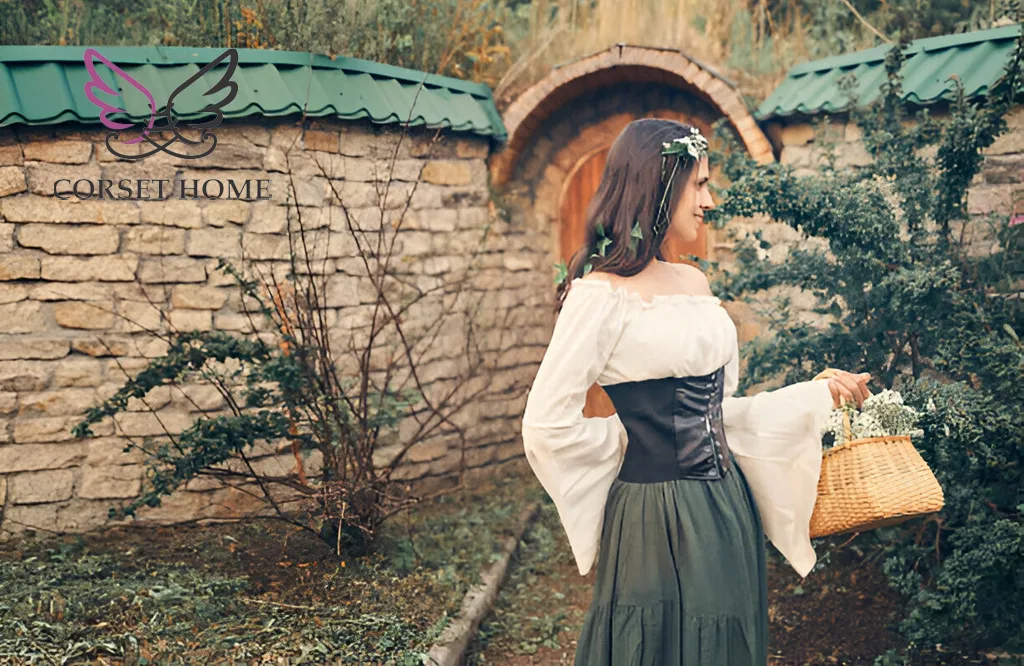Corsets, with their distinctive hourglass shape, have been an iconic garment in the history of fashion. They are often associated with the restrictive clothing of past centuries, symbolizing both beauty and discomfort. But when did corsets actually go out of fashion, and why? This blog delves into the timeline and reasons behind the decline of corsets in mainstream fashion.
When Did Corsets Go Out of Fashion? Step By Step Guide
The Peak of Corset Popularity
Corsets first gained widespread popularity during the 16th century, particularly in Western Europe. Initially designed to shape the torso and support the bust, corsets were worn by both men and women. By the 19th century, the corset had become an essential part of women’s fashion. The Victorian era, in particular, saw the peak of corset use. Women wore corsets daily to achieve the idealized hourglass figure, emphasizing a small waist, wide hips, and a prominent bust.
Early Signs of Decline
The decline of corsets began in the late 19th century, influenced by several factors. The feminist movement played a significant role, as women began to advocate for more practical and less restrictive clothing. Health professionals also started to voice concerns about the potential health risks associated with tight lacing, such as respiratory issues and organ displacement.
Fashion itself was undergoing a transformation. The Aesthetic Dress movement, which emerged in the late 19th century, promoted more natural and comfortable clothing. Influential figures like the French designer Paul Poiret began to design dresses that did not require corsets, emphasizing freedom of movement and comfort.
The Early 20th Century: A Turning Point
The early 20th century marked a significant turning point for the corset. World War I (1914-1918) played a crucial role in changing fashion norms. The war necessitated practicality and simplicity in women’s clothing, as many women took on roles traditionally held by men. This shift led to the adoption of more practical garments, and corsets began to be seen as impractical and outdated.
In the 1920s, the flapper fashion further accelerated the decline of the corset. The flapper style, characterized by loose, straight silhouettes, did not accommodate the cinched waist that corsets provided. Women embraced the freedom and modernity that flapper dresses represented, marking a departure from the restrictive clothing of the past.
The Mid-20th Century: Corsets as Underwear
By the mid-20th century, the corset had largely disappeared from everyday fashion. However, it did not vanish entirely. The corset evolved into more practical and less restrictive forms of shapewear, such as girdles and brassieres. These garments provided some of the shaping effects of corsets but were designed to be worn under clothing without the extreme tightness.
The introduction of elastic materials revolutionized shapewear, making it more comfortable and effective. Shapewear became a staple in women’s wardrobes, but it no longer carried the same cultural significance or visibility as the traditional corset.
The 1960s and 1970s: The Rise of Counterculture
The counterculture movements of the 1960s and 1970s further distanced mainstream fashion from corsets. The emphasis on natural beauty and freedom from restrictive clothing became central to the fashion of these decades. Women’s liberation movements during this time also promoted body positivity and the rejection of clothing that symbolized oppression and discomfort.
During these decades, fashion became more diverse and experimental, with a focus on self-expression and individuality. The corset, with its historical associations with conformity and restriction, did not align with the values of the counterculture.
The Late 20th Century: Corset Revival in Alternative Fashion
While corsets went out of fashion in mainstream culture, they found a new life in alternative and subcultural fashion. In the late 20th century, corsets became a symbol of rebellion and individuality within goth, punk, and fetish fashion communities. These groups embraced the dramatic and provocative nature of corsets, using them to make bold fashion statements.
High fashion also saw occasional revivals of the corset. Designers like Vivienne Westwood and Jean-Paul Gaultier incorporated corsets into their collections, reimagining them in contemporary contexts. These revivals, however, were often more about artistic expression and nostalgia than a return to everyday wear.
The 21st Century: Corsets in Contemporary Fashion
In the 21st century, corsets continue to appear in fashion, but their role has changed significantly. They are often used as statement pieces or fashion accessories rather than everyday garments. Modern corsets are designed with a focus on comfort and wearability, often incorporating modern materials and construction techniques.
The resurgence of interest in vintage and historical fashion has also contributed to the corset’s presence in contemporary style. Fashion enthusiasts and costume designers explore corsetry for its aesthetic appeal and craftsmanship, sometimes blending historical designs with modern fashion.
The popularity of the “red corset” in recent fashion collections highlights the corset’s enduring appeal. This bold and striking garment can be seen as a nod to its historical roots while being firmly placed within the context of modern fashion.
FAQs
Q: Why did corsets go out of fashion?
A: Corsets went out of fashion primarily due to changing societal attitudes towards women’s clothing and comfort. The feminist movement, health concerns, and evolving fashion trends all contributed to the decline of the corset.
Q: When did corsets start to decline in popularity?
A: The decline of corsets began in the late 19th century, with significant changes occurring in the early 20th century, particularly during and after World War I.
Q: Are corsets still worn today?
A: Yes, corsets are still worn today but in different contexts. They are often used in alternative fashion, costume design, and as statement pieces in high fashion rather than everyday wear.
Q: What replaced corsets in women’s fashion?
A: Corsets were replaced by more practical and less restrictive forms of shapewear, such as girdles and brassieres. These garments provided shaping effects without the extreme tightness of traditional corsets.
Q: Did any designers contribute to the corset’s revival?
A: Yes, designers like Vivienne Westwood and Jean-Paul Gaultier played a role in reviving the corset in high fashion, reimagining it in contemporary contexts.
Q: How has the perception of corsets changed over time?
A: The perception of corsets has shifted from a symbol of beauty and status to one of oppression and discomfort, and finally to a piece of fashion history and artistic expression.
Q: Can corsets be worn comfortably today?
A: Modern corsets are designed with comfort in mind, using contemporary materials and construction techniques. They can be worn comfortably as fashion accessories or for special occasions.
Q: What role did World War I play in the decline of corsets?
A: World War I necessitated practicality and simplicity in women’s clothing as many women took on roles traditionally held by men. This shift led to the adoption of more practical garments, contributing to the decline of corsets.
Q: How did the flapper fashion of the 1920s impact corset use?
A: The flapper fashion of the 1920s, characterized by loose, straight silhouettes, did not accommodate the cinched waist that corsets provided. Women embraced the freedom and modernity of flapper dresses, marking a departure from restrictive clothing.
Q: Are there any health concerns associated with wearing corsets?
A: Historically, tight lacing of corsets led to health concerns such as respiratory issues and organ displacement. Modern corsets designed for fashion and comfort do not pose the same risks.
Conclusion
The history of corsets is a fascinating journey through changing fashion trends, societal attitudes, and cultural movements. From their peak in the Victorian era to their decline in the early 20th century and eventual revival in alternative fashion, corsets have undergone significant transformations. Today, while not a staple of everyday fashion, corsets continue to capture the imagination of designers and fashion enthusiasts, proving their enduring appeal and versatility. Whether as a historical artifact or a contemporary fashion statement, the corset remains an iconic garment in the world of fashion.
At Corset Home, we’re committed to helping you find the perfect corset for your needs. If you have any further questions or need assistance, our customer service team is here to help. Enjoy exploring our wide

